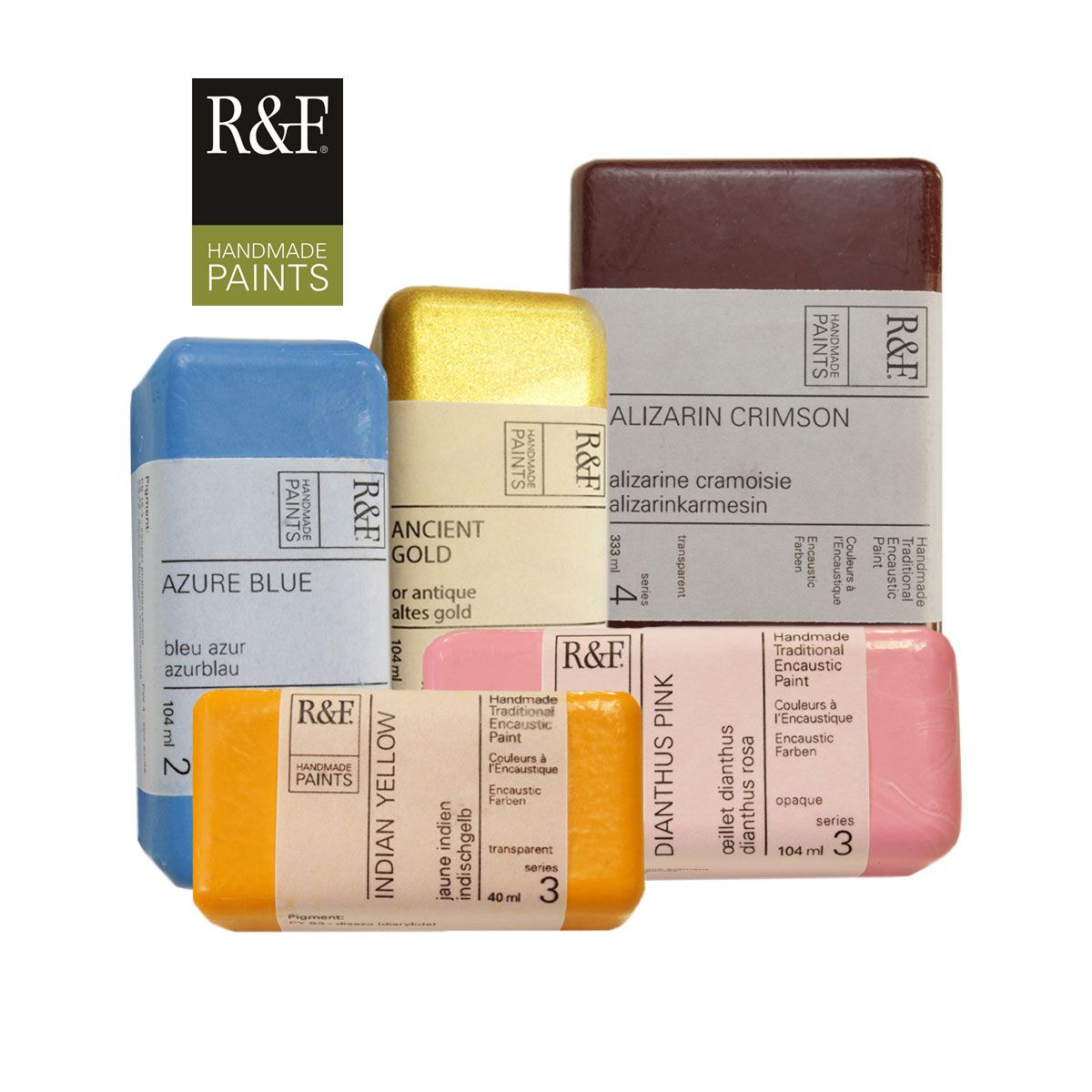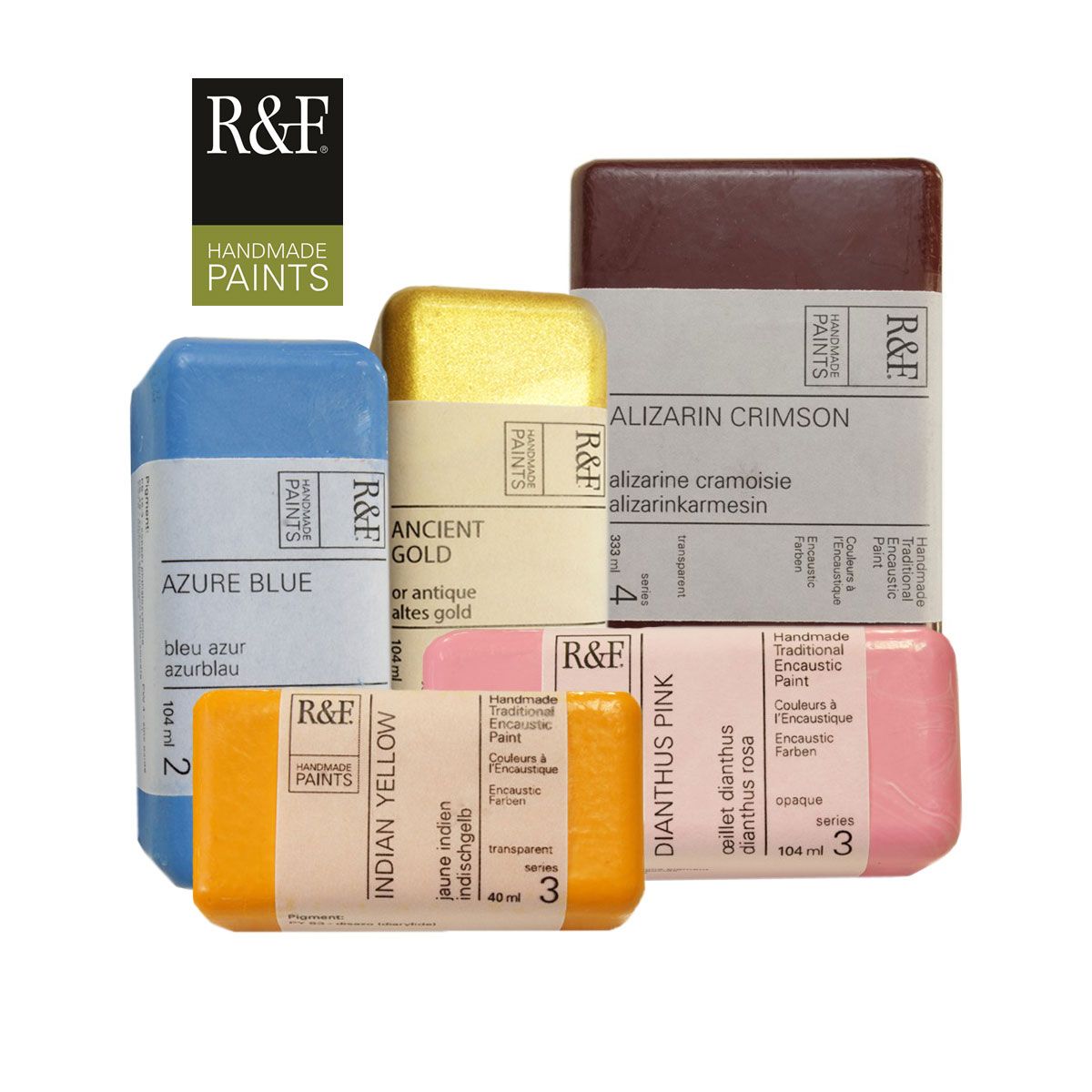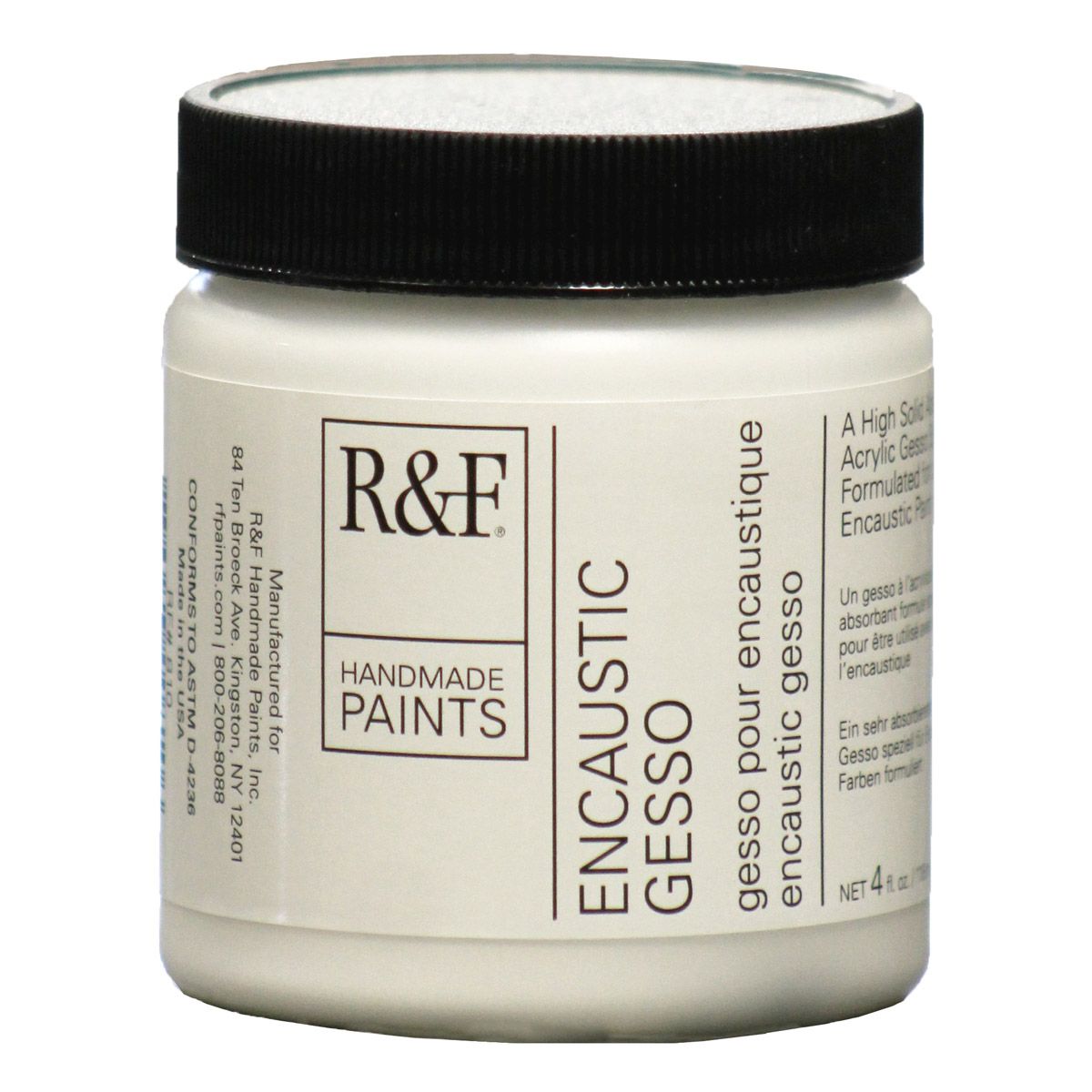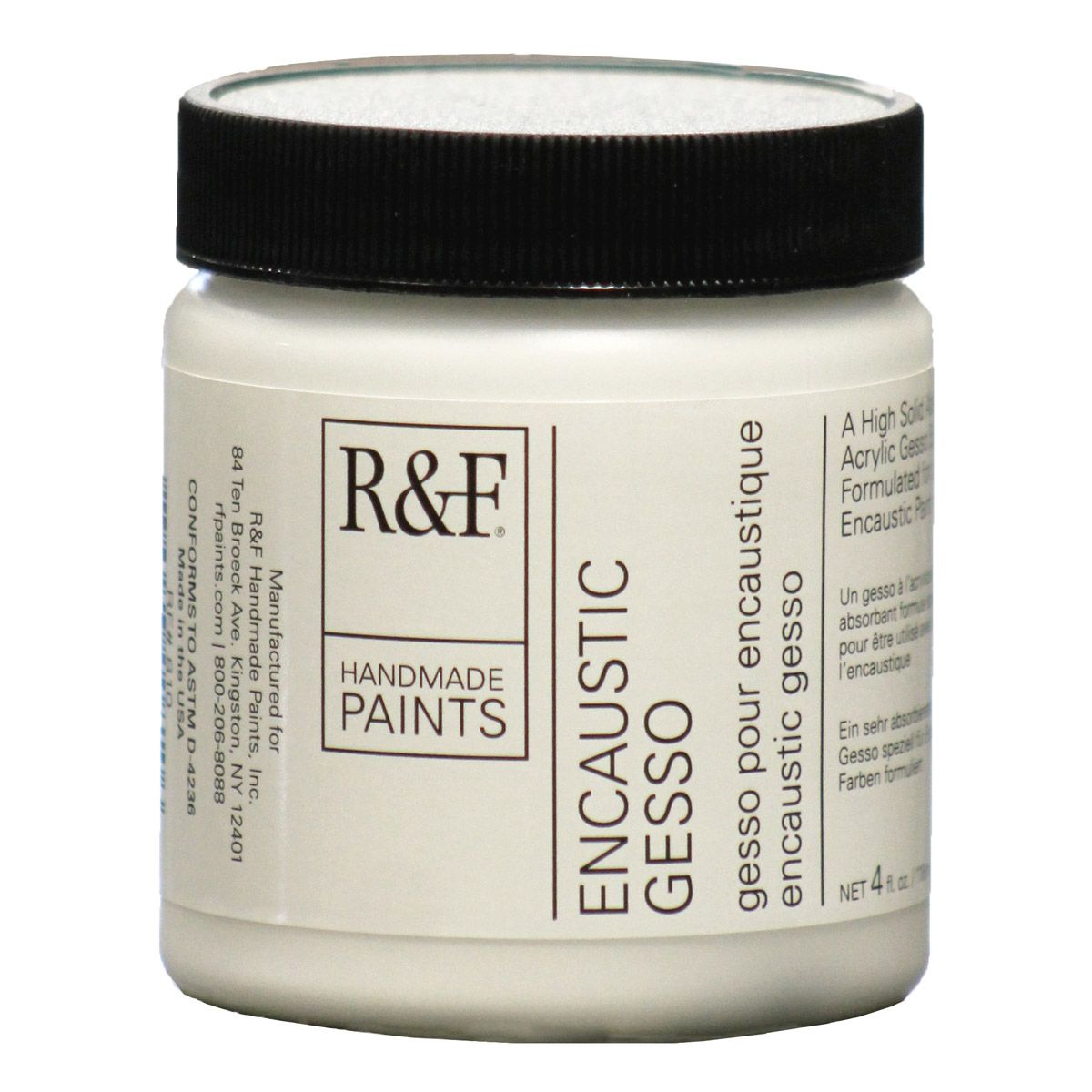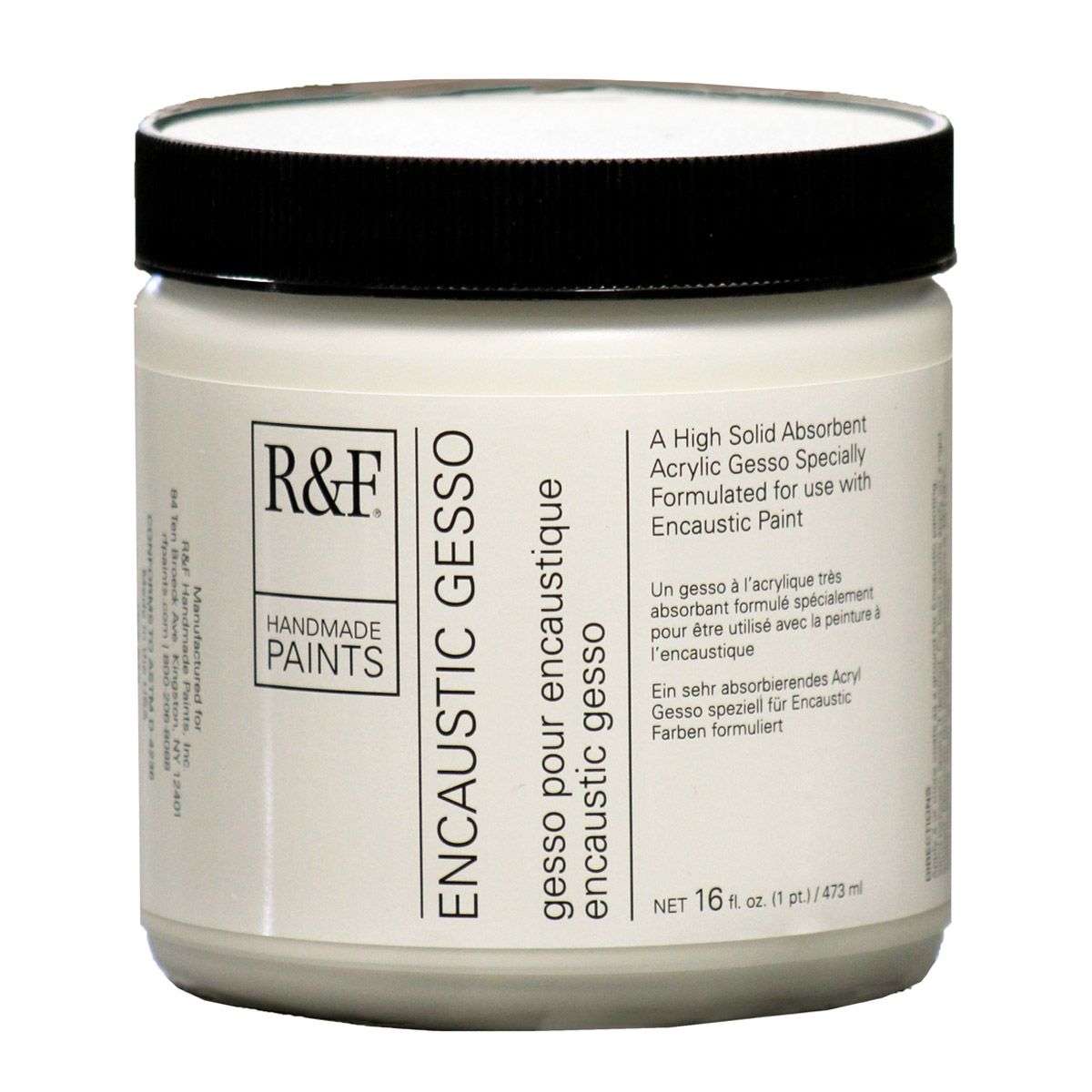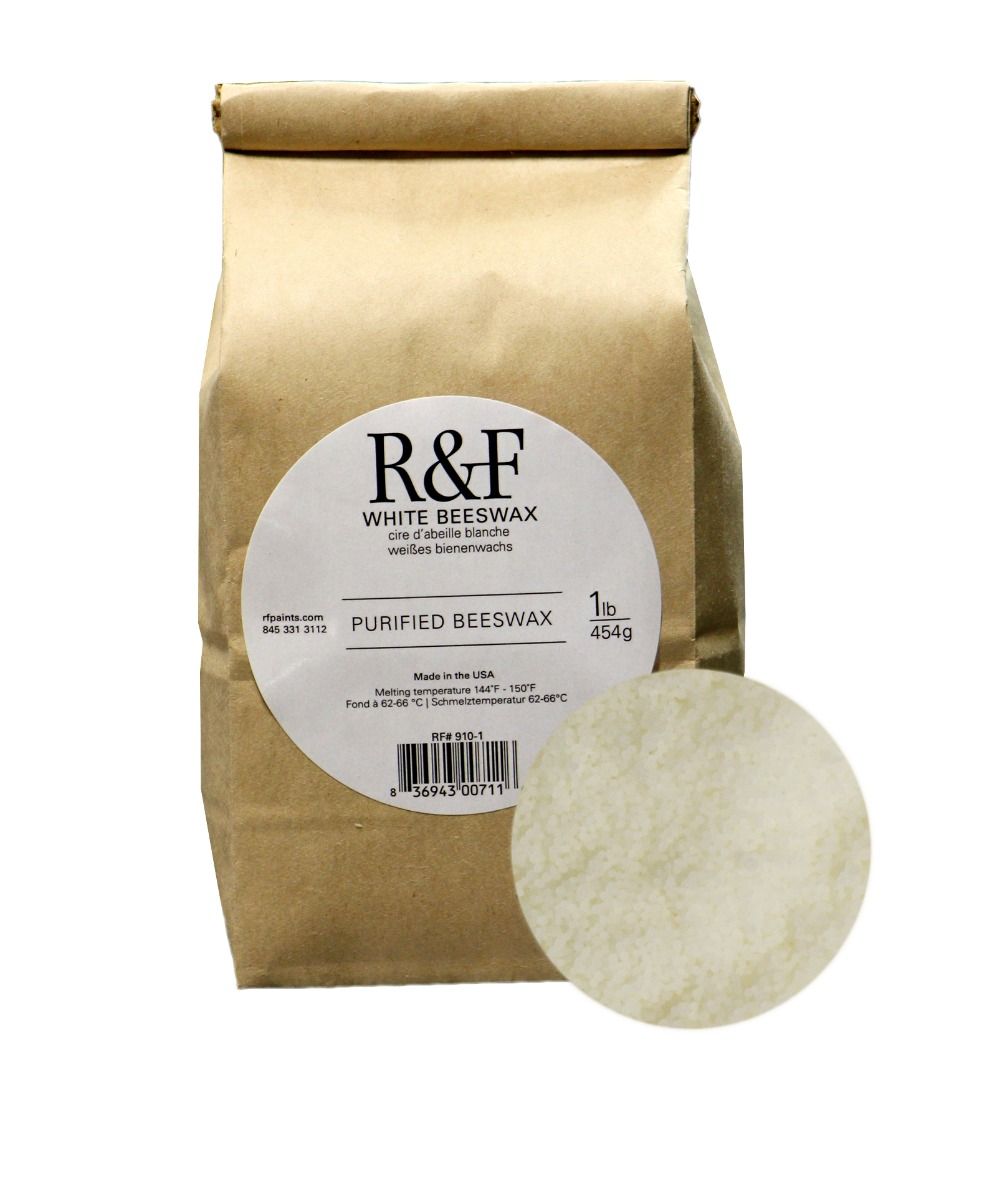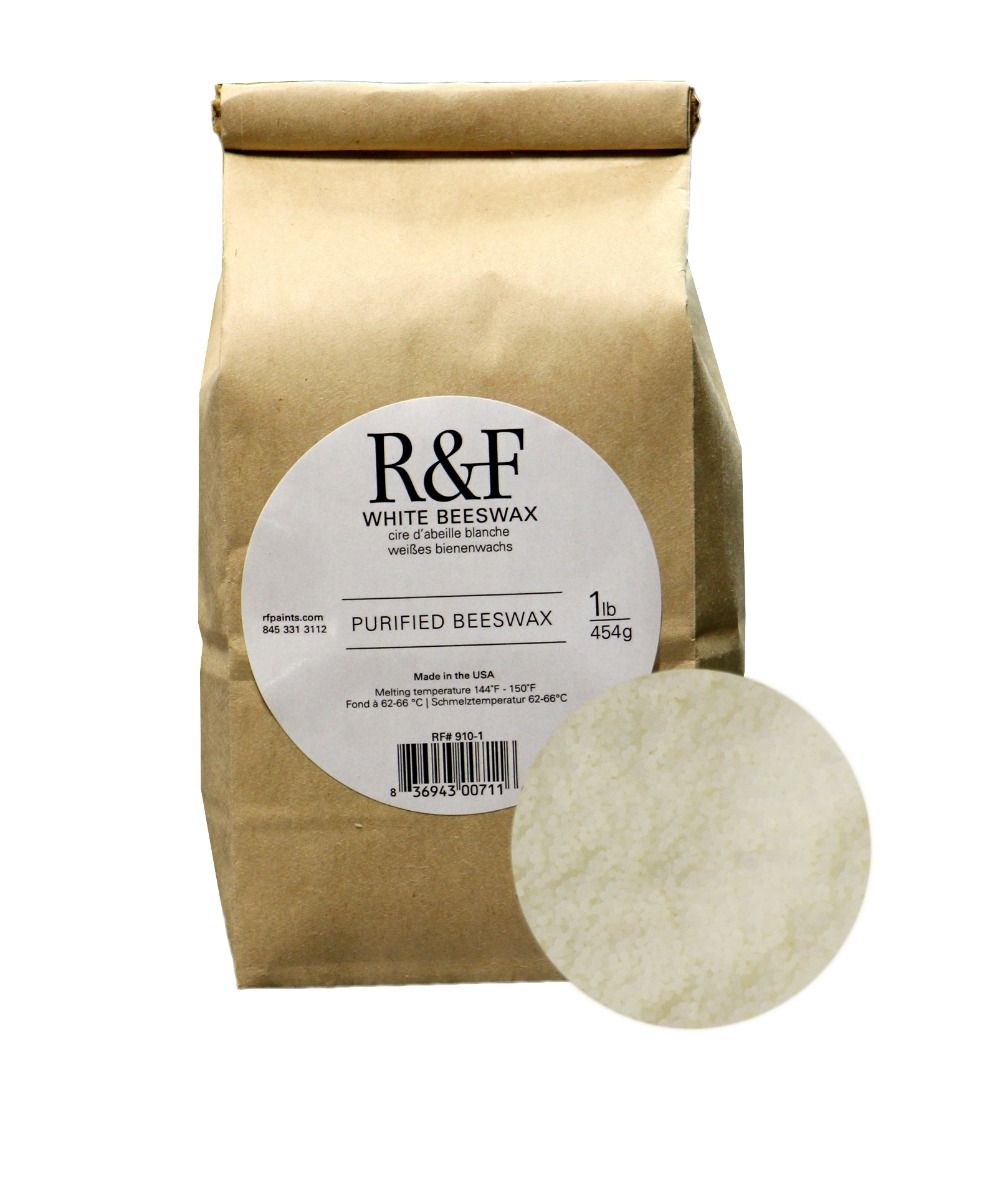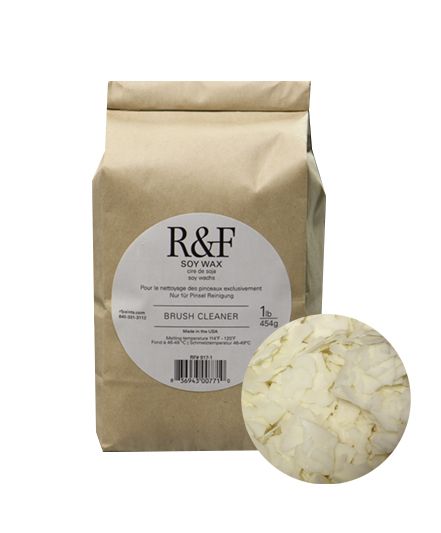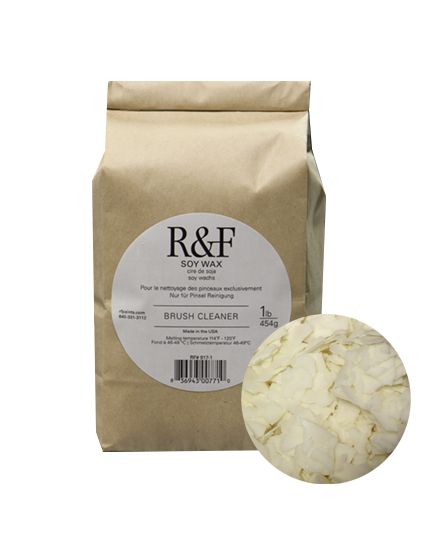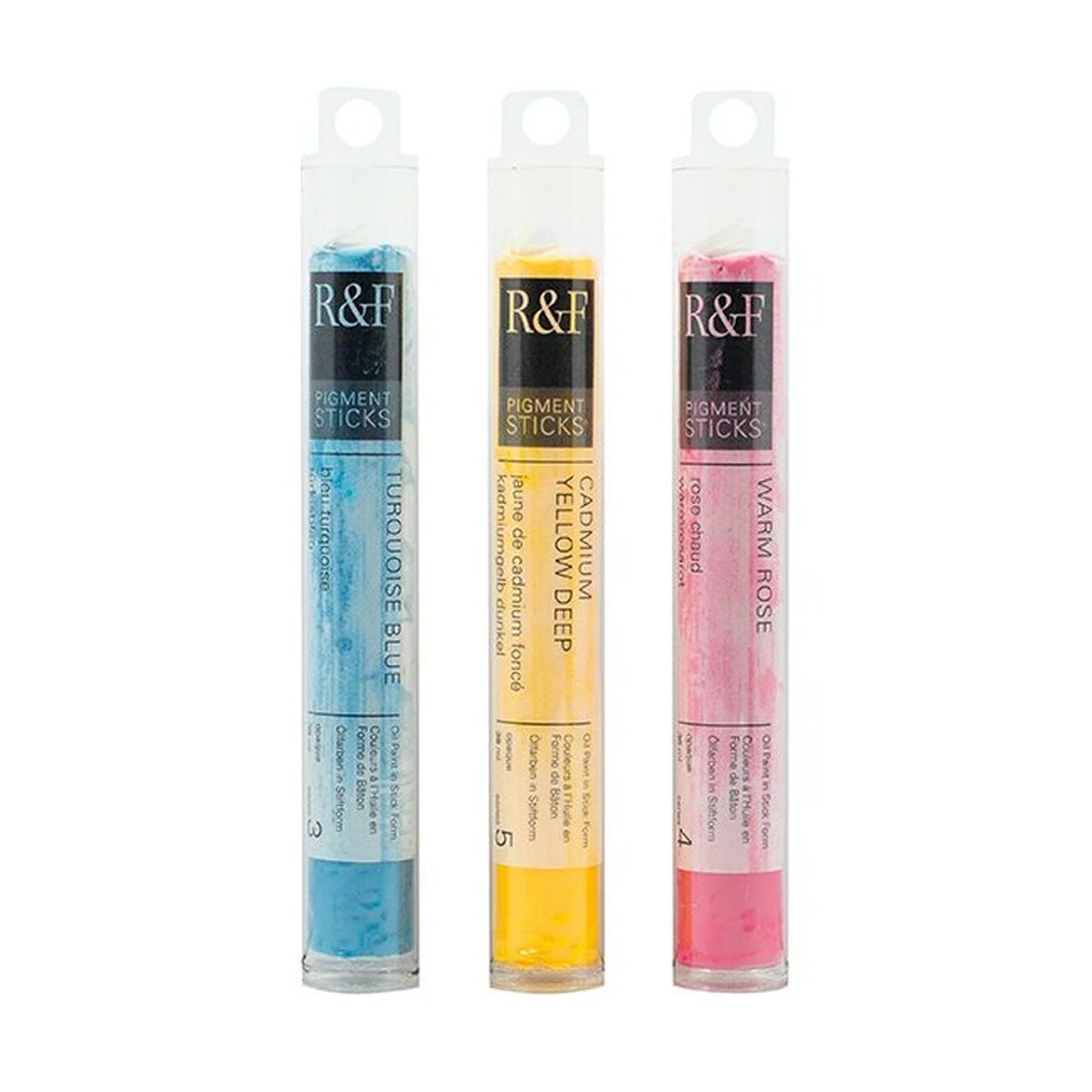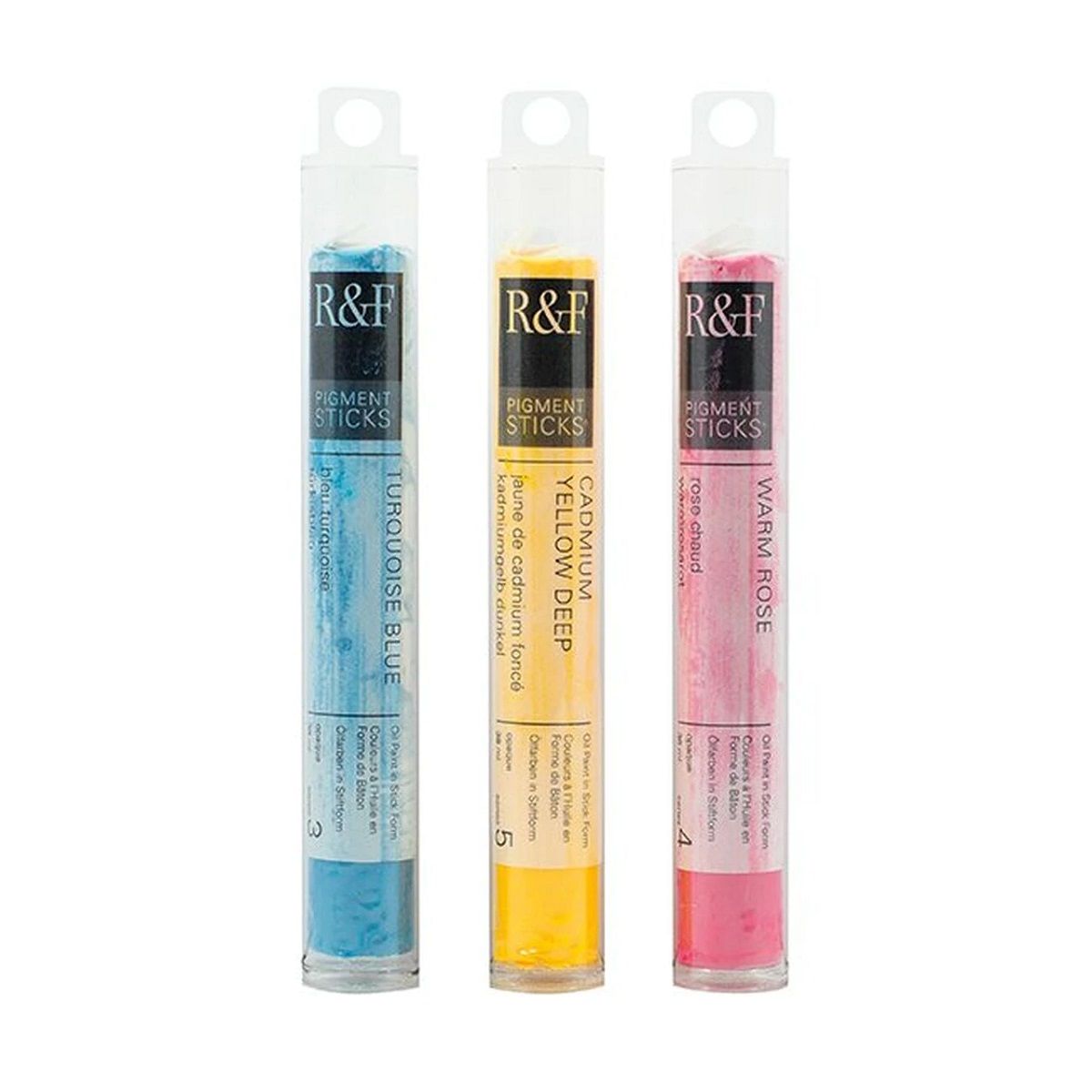R&F Oil Pigment Stick, Green Gold Pale 38ml
R&F Pigment Stick - Green Gold Pale, 40 ml
Green Gold is a unique brownish-green at full strength, but other colours can persuade its ashen tint to lose even a hint of that green. Surround it with cadmium lemon, ultramarine blue pale, and warm pink to see how easily influenced it is. Cooler than Brilliant Yellow Extra Pale and Sienna Yellow Extra Pale. Blend Green Gold with Titanium Zinc.
- Pigment Composition: PY129-Green Gold; PW7-Zinc Sulphide White; PW6-Titanium White
- Paint Lines: Encaustic Pigment Stick
- Opacity: Opaque
- Pigment Stick Drying Rate: Medium
- Classification: Mixed
- Chemical Composition: Green Gold + Titanium White + Zinc White
- Safety Information: Conforms to ASTM D-4236
R&F Pigment Stick - Green Gold Pale, 40 ml
Green Gold is a unique brownish-green at full strength, but other colours can persuade its pale tint to lose even a hint of that green. Surround it with cadmium lemon, ultramarine blue pale, and warm pink to see how easily influenced it is. Cooler than Brilliant Yellow Extra Pale and Sienna Yellow Extra Pale. Blend Green Gold with Titanium Zinc.
- Pigment Composition: PY129-Green Gold; PW7-Zinc Sulphide White; PW6-Titanium White
- Paint Lines: Encaustic Pigment Stick
- Opacity: Opaque
- Pigment Stick Drying Rate: Medium
- Classification: Mixed
- Chemical Composition: Green Gold + Titanium White + Zinc White
- Safety Information: Conforms to ASTM D-4236
Pigment Name: PY129-Green Gold
Classification: Synthetic Organic, Polymethine
Chemical Composition: Copper azomethine green
Properties
A transparent greenish yellow pigment with low tinting strength.
Permanence
Pigment PY129 has been reported to have excellent lightfastness.
Toxicity
Pigment PY129 is not considered to be hazardous.
History
Pigment Yellow PY129 has been used in automotive coatings.
Pigment Name: PW7-Zinc Sulphide White
Classification: Synthetic Inorganic
Chemical Composition: Zinc sulphide
Properties
Zinc Sulphide White is a semi-transparent yellowish-white pigment. Zinc sulphide and zinc oxide (PW4) are often combined to create a more natural white colour. Transparency increases as particle size decrease. When slight impurities are added, zinc sulphide has phosphorescent and electroluminescent properties. It is often used to manufacture fluorescent or glow-in-the-dark paints.
Permanence
Zinc Sulphide White has excellent permanence and lightfastness.
Toxicity
Zinc Sulphide is non-toxic, but ore deposits often contain lead. Traces of lead and other impurities may be present in pigment powders. Ingestion is not recommended.
History
Zinc sulphide, when combined with slight impurities, has phosphorescent properties. It is often used for invisible ink that glows with exposure to ultraviolet light. Zinc sulphide is used in the manufacture of fluorescent paints.
Pigment Name: PW6-Titanium White
Classification: Synthetic Inorganic
Chemical Composition: Titanium dioxide
Properties
Titanium White is the most brilliant of the white pigments. It is considered an all-purpose oil colour useful in all techniques and the best all-around white. Its masstone is neither warm nor cool, placing it somewhere between Lead White and Zinc White. It is less prone to cracking and yellowing than Lead White, but it still yellows easily. Titanium White dries slowly in oil form, more slowly than Lead White but more quickly than Zinc White. It is opaque in oil and acrylic forms and semi-opaque in watercolour form. This pigment has good chemical stability, and its tinting strength is superior to both Lead White and Zinc White.
Permanence
Titanium White has excellent permanence and lightfastness.
Toxicity
Titanium dioxide is highly stable and is regarded as completely non-toxic. Animal studies do not indicate that it is absorbed biologically, even after long periods of exposure. The primary safety concern is with the inhalation of fine pigment dust particles.
History
Titanium is the ninth most abundant element in the Earth's crust. However, mineral deposits that are economical to mine are less common. Titanium dioxide was first discovered in 1821, although it could not be mass-produced until 1919. Widespread use of the pigment began in the 1940s. Since that time, it has become the most commonly used white pigment. The name comes from the Latin word Titan, the name for the elder brother of Kronos and the ancestor of the Titans, and the Greek word tito, meaning day or sun.
| Size | 38 ml |
|---|---|
| Brand | R&F Encaustic Handmade Paints |
| Country of Manufacture | United States |
| Type of Store Credit value | Select |
| Country of Origin | 836943005969 |














